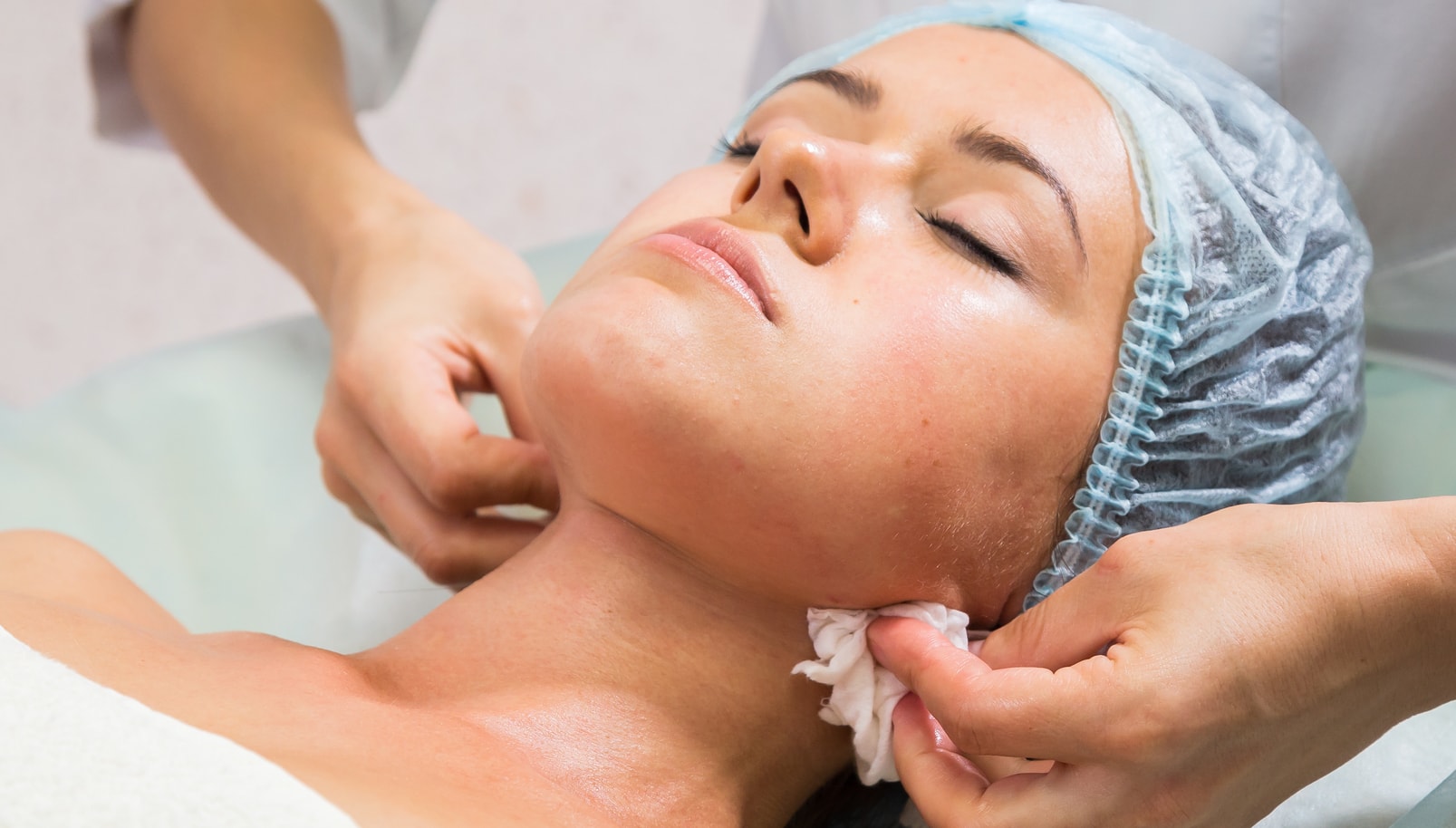
A vampire facelift is a non-surgical skin rejuvenation procedure that makes use of the patient’s own blood. The procedure involves a dermatologist harvesting the patient’s blood first and then processing it through a centrifuge to separate the blood cells from the clear liquid in which they are suspended. Finally, the liquid is injected back into the patient’s skin. The clear liquid is called PRP or Platelet-Rich Plasma. The idea is to take advantage of the body’s ability to heal itself by using the stem cells and growth factors in the blood to rejuvenate the skin.
Traditionally, a vampire facelift is done in conjunction with dermal filler injections. Dermal fillers usually contain hyaluronic acid and come under the brand names Restylane and Juvederm. However, a vampire facelift does not necessarily have to be combined with fillers. It can be done independently and injected directly into the skin or under the skin. One interesting thing about PRP is that besides injecting it, PRP can actually be rubbed onto the surface of the skin through micro-channels created using other procedures such as microneedling or other laser technologies.
Anybody who is looking for some rejuvenation of the skin is an ideal candidate for a vampire facelift. Patients who are looking to have other cosmetic or medical procedures may also opt to undergo vampire facelift as a complementary treatment. Vampire facelift is the most natural way to rejuvenate the skin, so doing it in conjunction with any cosmetic procedure should not cause any problem at all. Even patients who had surgery can get their scar injected with PRP to make it heal better and faster.
Most patients ask for a vampire facelift because they want to enhance the appearance of their skin and they prefer something more than an average treatment. Vampire facelift gives them the opportunity to get good results, heal faster and have less risk of infection.
A facelift is an entirely different procedure from a vampire facelift. First and foremost, a traditional facelift is a surgical procedure while vampire facelift is non-surgical. When patients are considering undergoing either one, he or she should discuss expectations with their dermatologist because they are very different things.
Surgical facelift is good in cases where there is a lot of skin laxity and the goal is to pull the skin back. This is something a vampire facelift cannot accomplish. A vampire facelift produces subtle tightening and improvement in skin texture and quality, but it will not produce the results one gets from a traditional facelift because it does not pull the skin that much. However, the patient can certainly opt for PRP as an adjunctive treatment to a facelift. After the facelift, the surgeon can inject PRP to help with the healing process.
A traditional facelift means the patient has to have an operation. It is a bigger procedure than a vampire facelift and has more side effects. A vampire facelift has practically no side effects and does not require long recovery periods. With this procedure, the patient looks normal within two days and will not have any pain.
The main limitation of a vampire facelift is that it does not do very much lifting. Patients looking to do a traditional facelift might not get the results they want from a PRP application. Again, a vampire facelift does not pull back the skin to the degree of a traditional facelift. In general, PRP has many applications other than rejuvenation of the face and subtle lifting of the skin. Dermatologists also use it in patients with male-pattern hair loss since it stimulates existing hair follicles and gets new hair follicles to grow.
Since the PRP is obtained from the patient’s own body, there are really no complications associated with vampire facelift. The only risk that a patient might have is some bruising and swelling in the arm which results from drawing out blood.
PRP in itself has practically no downtime. Once injected into the skin, there may be a little bruising and swelling at the injection site but it does not stop patients from resuming their daily activities. When combined with other treatments, PRP actually reduces the downtime of the procedure. For example, if a dermatologist does an ablative laser treatment like Fraxel combined with PRP, the patient can expect a healing time that is about 2 days shorter than the normal 5 to 7 days. PRP can be used to promote faster healing and improve downtimes.
Patients will notice improvements after a couple of weeks. Six weeks is the usual amount of time where patients see improvements in the way their skin feels and looks. There will be some slight lift to the skin but not as much as a facelift. As for longevity, nobody really knows how long the results of vampire facelift last because it is a relatively new procedure. There have not been a lot of controlled studies on PRP since it is still a new technology. Dermatologists say that skin improvements tend to be more permanent, more sustainable, and longer-lasting. Instead of lasting a few months like other skin rejuvenating treatments do, the effects of vampire facelift might last years.
Maintenance and touch-up procedures depend on what the patient wants and what he or she is trying to achieve. On average, a vampire facelift should be done every three to six months in conjunction with other skin rejuvenating procedures like microneedling. We do not usually combine photofacial with PRP.
Vampire facelift is a new kind of cosmetic procedure that is effective and very safe since it does not require the injection of any foreign materials into the body. While it is not the only solution for wrinkles, it is definitely a promising way to get younger and smoother skin in the most natural way.
Written by Cosmetic Town Editorial Team- AA
Based on an exclusive interview with Daniel Carrasco, MD in Austin, TX